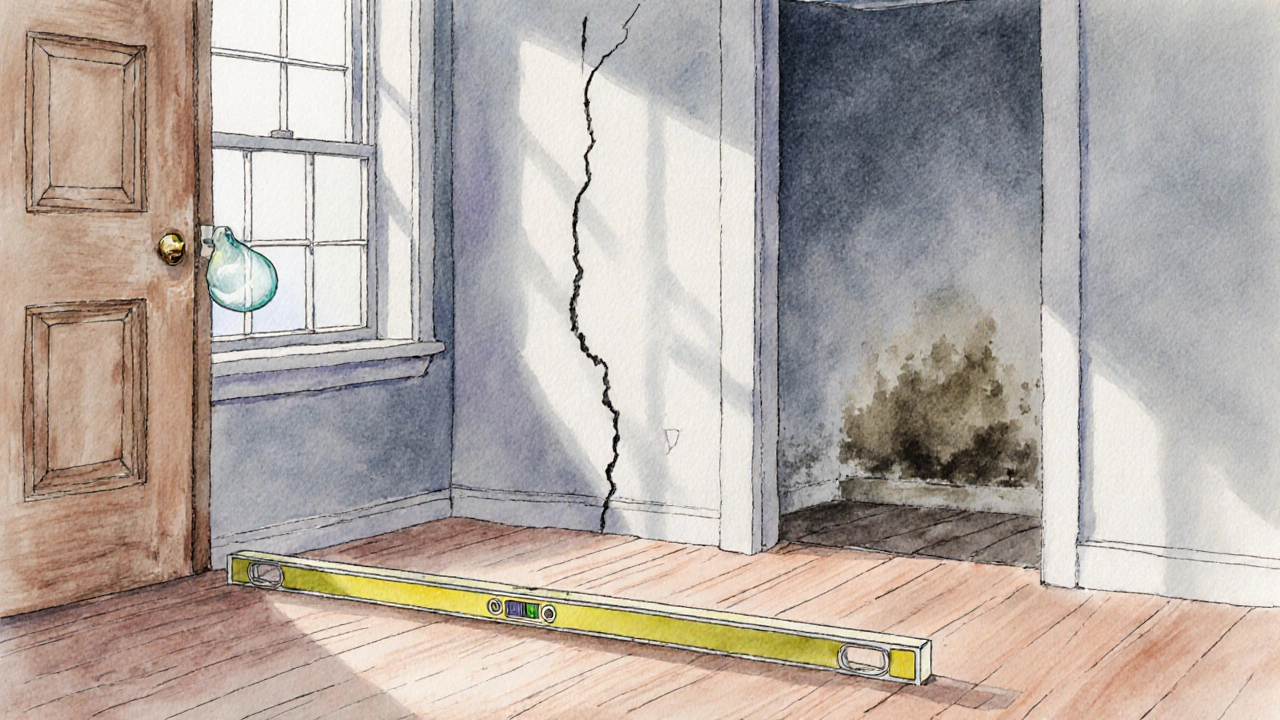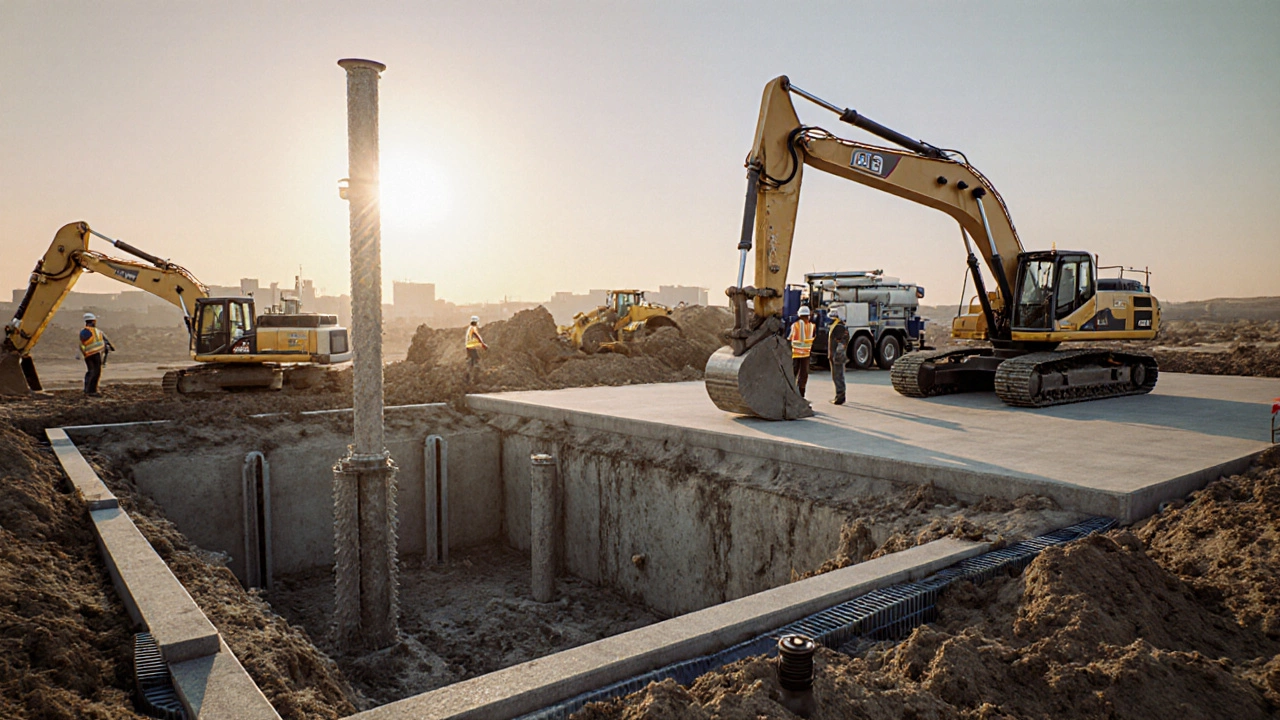Major foundation issues: what counts as a serious problem?

When homeowners hear the term major foundation issue is a structural problem severe enough to affect a building's stability, safety, and long‑term durability, the reaction is often panic. But what exactly pushes a problem into the “major” category?
Understanding a Major Foundation Issue
A major foundation issue usually involves extensive movement, large cracks, or moisture problems that compromise load‑bearing elements. Small hairline cracks or minor settlement might be inconvenient, yet they rarely threaten the structure. By contrast, a major issue can lead to uneven floors, door and window misalignment, or even a partial collapse if left unchecked.
Common Signs That Indicate Serious Problems
- Doors and windows that stick or won’t close properly.
- Visible gaps between walls and ceilings, often a tell‑tale sign of vertical movement.
- Cracks wider than 1/4 inch (6 mm) in concrete slabs or brickwork, especially if they follow a stair‑step pattern.
- Uneven floor levels measured with a long level or laser scanner.
- Persistent damp spots or mold in basements, indicating hydrostatic pressure.
These clues point to underlying forces that exceed normal settlement thresholds.
How Engineers Classify Issues: Minor vs. Major
Structural engineers use a simple matrix to decide if an issue is minor or major. The key variables are severity of movement measured in millimetres or inches of displacement, risk to occupants whether the problem could cause injury or collapse, and cost of repair expected expenditure for a permanent fix. If any of these exceed industry thresholds, the issue is deemed major.
| Criterion | Minor Issue | Major Issue |
|---|---|---|
| Crack Width | < 1/4" (6 mm) | > 1/4" (6 mm) |
| Settlement | < 0.5" (12 mm) total | > 0.5" (12 mm) total |
| Risk Level | Low - cosmetic | High - structural safety |
| Typical Repair Cost (UK) | £500‑£2,000 | £5,000‑£30,000+ |

Typical Causes Behind Major Issues
Several forces can push a foundation from stable to critical:
- Soil settlement long‑term compression of underlying soil layers that exceeds design assumptions.
- Hydrostatic pressure water buildup against basement walls causing outward force, often after prolonged rain.
- Poor workmanship inadequate footings, missing reinforcement, or rushed concrete pours.
- Tree roots or nearby construction that remove support from the soil matrix.
- Severe vibration from nearby traffic, rail lines, or heavy machinery.
When any of these factors act together, the cumulative stress can exceed the capacity of a slab, pier, or strip footing.
Repair Options and Cost Implications
Once a major issue is confirmed, engineers typically recommend one of three repair philosophies:
- Under‑pinning: inserting steel or concrete piers beneath the existing footing to lift and stabilize the structure.
- Slab jacking (or mudjacking): pumping a cement‑based grout beneath the slab to fill voids and raise it to its original level.
- Foundation replacement: in extreme cases, the existing footings are removed and rebuilt to modern standards.
Costs vary dramatically. Under‑pinning a typical three‑bedroom home in Manchester can run £8,000‑£12,000, while a full slab replacement might exceed £30,000. Financing options, government grants for energy‑efficient upgrades, and insurance coverage are all worth investigating.

Preventive Measures and Maintenance
Even after a repair, ongoing vigilance reduces the chance of recurrence:
- Maintain proper drainage around the perimeter; install or clean gutters and downspouts regularly.
- Use a sump pump to keep basement water levels low and test it quarterly.
- Monitor indoor humidity; excess moisture can expand soil volume and push against foundations.
- Schedule a professional geotechnical survey every 5‑10 years for older properties to catch subtle changes early.
When to Call a Professional
If you notice any of the signs listed earlier, especially wide cracks or rapid floor movement, contact a qualified foundation specialist immediately. A reputable contractor will perform a visual inspection, followed by precise measurements using laser levels or digital inclinometers.
Do not attempt DIY shimming or “quick fixes” for a major issue - those can mask the problem and lead to higher costs later.
Quick Checklist for Homeowners
- Check doors/windows for sticking - note any new changes.
- Inspect walls for stair‑step cracks wider than 1/4".
- Measure floor level differences with a long level.
- Look for damp spots in basements after heavy rain.
- Record observations and contact a foundation repair expert if two or more items appear.
What distinguishes a major foundation issue from a minor one?
A major issue involves significant movement, large cracks (over 1/4"), and a real risk to the building's safety, whereas minor problems are typically cosmetic and have minimal structural impact.
How quickly should I act if I see large cracks?
Within days. Large cracks can indicate active movement, and early assessment can prevent costly repairs later.
Is under‑pinning the best solution for most major issues?
Under‑pinning works well for many cases, especially for homes with pier‑and‑beam foundations. The right method depends on soil type, foundation style, and the extent of movement.
Can I finance foundation repairs?
Yes. Many banks offer home‑improvement loans, and certain local councils provide grants for structural repairs that improve energy efficiency.
What maintenance steps reduce future foundation problems?
Keep gutters clear, ensure proper grading away from the house, use a functioning sump pump, control indoor humidity, and schedule periodic geotechnical assessments.
Write a comment